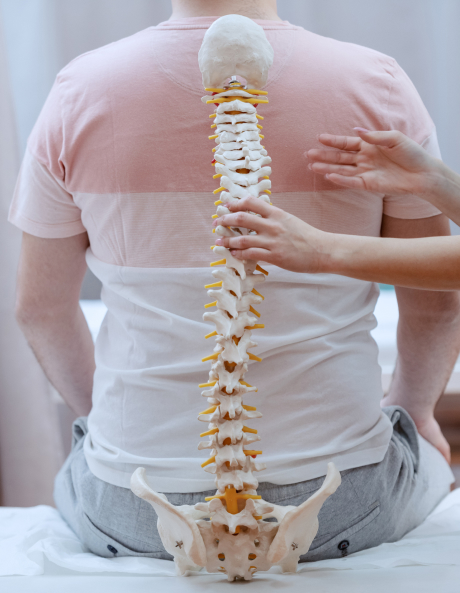An Optimal Spine
equals optimal health
Chiropractic is a government registered and regulated healthcare profession. Regulated by the same board that regulates medical doctors (AHPRA).
About Us
Your health and well-being are determined by the health of your spine and nervous system. By consulting our office, you are about to become actively involved in a life-changing experience.
People around the world are recognising the benefit of seeking an alternative to traditional medicine; one that will help them achieve and maintain optimal health without requiring invasive treatments. As a patient at Connective Chiropractic we will personally tailor a chiropractic and wellness program specifically targeted to your needs using the least invasive yet highly-effective techniques and services.




Our Services
Chiropractic Care
Chiropractic Care
Getting the curve back
Getting the curve back
X-Ray
X-Ray
Foot Levelers
Foot Levelers



Why choose Connective Chiropractic?

Connective Chiropractic
New Patient Center
What our patients say






Meet our Team
Blog

For skeptics only
“I don’t believe in Chiropractic” While chiropractic is unique and different, it certainly is not something that you have to

Backpack safety for kids
Over 95% of students carry backpacks in Australia. About 50% of those students carry more than the recommended weight in

4 home tests for nerve interference
To enjoy optimum physical and emotional well-being, our bodies have to be working properly. They need to have a nerve

Vertebral subluxation
Vertebral subluxation refers to a set of signs and symptoms that affect the spinal column. Specifically, it is a complex

How does chiropractic work
Like other health-care providers, we follow a standard routine to gain information about the patient. We consult, review the case

What is chiropractic
Chiropractors understand that one of the main causes of pain and disease is the misalignment and abnormal motion of the
FAQ - Learn the answers to commonly asked questions about chiropractic.
More and more, evidence supports early referral and assessment of musculoskeletal pain patients to an appropriately qualified musculoskeletal clinician such as a chiropractor. Chiropractors are not only trained to treat musculoskeletal pain patients, they are also trained to facilitate health promotion and lifestyle advice, rehabilitation and patient education.
Patients often seek chiropractic care for back pain, neck pain and headaches, as well as for general health and wellbeing.
There is a common misconception that chiropractic care involves a singular therapeutic technique – spinal manipulation (spinal adjustment). Chiropractors, however, use a patient centred, multi-modal model of care. Dr Bill uses a myriad of techniques that he has studied over his decades of practicing chiropractic, based on the presentation and needs of each individual patient.
When treating patients, chiropractors are no different to any other health professional (including GPs). They make an assessment and develop a treatment plan in accordance with the needs of the patient and provide advice on future management strategies.
Chiropractors use skill, not force or strength to conduct specific chiropractic adjustments. Various types of manual therapy and low force interventions are also used where appropriate.
Chiropractic care has a very low risk profile, especially when compared with more invasive methods of spinal healthcare however, all forms of chiropractic treatment have the potential for adverse reactions in some people. These risks are fully explained to all of our patients before your very first adjustment.
A chiropractic adjustment is the application of a specific force in a precise direction, applied skillfully to a spinal joint that is fixated, “locked up”, or not moving as it should. This can help improve or restore motion to the joint, helping the spine to gradually regain more normal motion and function.
There are many ways to adjust the spine. Usually the chiropractor’s hands or a specially designed instrument delivers a brief and highly-accurate thrust. Some adjusting methods are quick, whereas others require a slow, constant or indirect pressure.
Restoring better spinal function can help improve mobility, vitality, and endurance.
In short, no! There is no age limit on chiropractic and more and more people are consulting chiropractors, especially in their later years. In order to deliver the safest, most effective and highest quality care possible, chiropractic techniques are modified appropriately for each person at every age and stage of life.
While brief discomfort after an adjustment can occur, it is rare and most people find having an adjustment very relaxing.
With some adjustments you may sometimes feel or hear a popping sound from the spinal joints. This is simply caused by a change in pressure in the joint, as spinal movement is improved.
Dr Bill will sometimes use a hand-held instrument (Arthrostim) to adjust the spine. He frequently uses wedges or blocks to help realign part of the body. Whatever the technique, chiropractors use skill, not force or strength, to care for people with the highest degree of safety and effectiveness.
Dr Bill graduated from the Palmer College of Chiropractic in Davenport, Iowa in 1975. He has continued his education mastering many chiropractic techniques.
In addition, all registered chiropractors must complete mandatory continuing education each year in order to maintain registration and practice as a non-pharmacological, non-surgical spine care and musculoskeletal-allied healthcare professional.
All chiropractors must be registered with the Chiropractic Board of Australia and meet the Board’s registration standards, in order to practise in Australia.
Under the Health Practitioner Regulation National Law, as in force in each state and territory, a person cannot call them self a chiropractor (or hold them self out to be a chiropractor) or undertake manipulation of the cervical spine if they are not registered with the Chiropractic Board of Australia.

